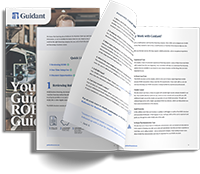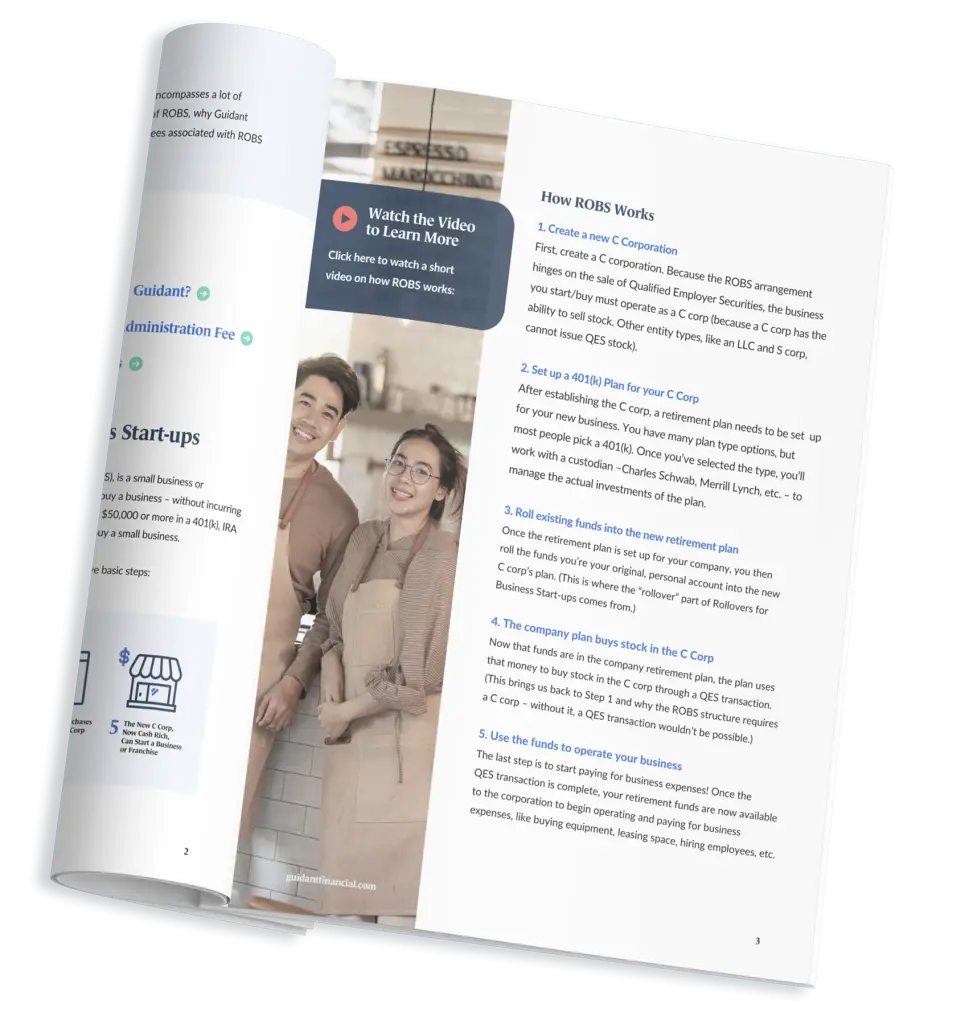Why do businesses fail? Common reasons small business owners may shut down or sell their businesses range from cash flow issues to poor leadership. Understanding why businesses fail is the best way to avoid the same mistakes and lead your small business to success. We’ll discuss a few major reasons for failure below – and what you can do to avoid the same pitfalls.
Every neighborhood has one: a storefront that changes into a new business every six months. Maybe it started as a breakfast café, then it was a karaoke bar, then a nail salon. These new small businesses set up and shut down almost before potential customers could even notice.
These ever-changing storefronts can be a scary reminder that small businesses can come and go in no time at all.
Business failure rates show that 20 percent of small businesses fail in their first year, according to Fundera. That number rises to 50 percent by their fifth year. While those stats might be disheartening, they don’t portray the whole story. Many small businesses fail because of a few finite mistakes. The hopeful news is that you can avoid these missteps by understanding, recognizing, and solving the top mistakes below.
1. Starting With Too Much Debt
Sometimes, it’s necessary to go into debt to finance the launch or purchase of your business. Few aspiring business owners have sufficient capital on hand to pay out-of-pocket, so loans are a reasonable choice to help finance a new venture.
But if you don’t prioritize repaying your debt and making timely payments, it becomes harder and harder to grow your operations and stay afloat. Small business owners across all industries report that lack of capital or cash flow is their top challenge. Adding the weight of debt – even if you have a viable product – makes it even more difficult to turn a profit, too.
To avoid starting out with so much debt to repay, many aspiring small business owners look to alternative funding methods such as 401(k) Business Financing, also known as Rollovers as Business Startups (ROBS). With ROBS, you can use your eligible retirement funds to start or buy a business without incurring tax penalties or taking a taxable distribution. ROBS can even be used as the down payment on a small business loan – which lets you preserve your savings and decrease your monthly payments.
Successful business owners know they need to keep their debt down to have a sustainable business model.
2. No Business Plan
A business plan is a crucial element for a small business. Your business plan will help you with almost all aspects of your business, from financing to marketing to operations. If you create your business plan early on in your small business journey, you can use it as a guide and a checklist throughout your small business journey. With a smart, well-thought-out business plan, you can research and understand key areas for success – and avoid the pitfall of your business failing due to poor planning.
Examples of Key Business Plan Sections:
- Business Model. A critical section in your business plan is your specific business model. What is your business? How do you plan on making money from it? Are you a SaaS product with a subscription plan? Are you a gym that offers varying membership options? Figuring out your business model early on helps you figure out how and when you’ll become profitable.
- Market Need. The market need for your product or service is also important to analyze early in the process of starting your business to ensure your survival rate stays high. You don’t want to spend time, money, and effort on a small business idea that has no chance of survival due to being in the wrong market. In fact, forty-two percent of small businesses fail because there’s no need for their product or service, according to Business Insider.
- Locational Analysis. Two key items that are critical to your business survival rate are understanding the industry you’re selling your product or service in, and being knowledgeable about the current competition and where your product fits in the market. A locational analysis is a big part of this understanding if your business will have a physical location. Make sure you’ll actually be serving the community you set yourself up in. You can do this by researching customers’ buying patterns, education, income levels, and other demographic information.
- Competitive Analysis. If you’re a local brick-and-mortar business, it’s crucial to understand your competition. Are you thinking about opening a pasta spot? You should know that there’s a thriving Italian restaurant already beloved by the local customer base and it’s across the street from your proposed location. Then you can pivot and fill a need with a Mexican restaurant instead, or look at a new area across town. The idea is to understand your competition so you can find your niche. Even if your business is fully online, you still need to understand your competition. If someone is searching Google for the service you provide, what other businesses come up in the search results? How are their reviews? What do you need to do to get more and better reviews? How do you make sure you show up in the Google search before your competition does?
- Marketing Strategy. If you’re going to spend all your time, money, and energy on starting a small business, you want to ensure you have a solid marketing plan to help it grow. A smart marketing strategy entails marketing campaigns such as social media campaigns to garner awareness, and setting marketing budgets so you don’t over (or under) spend.
Start Your Business Debt-Free
3. Mismanaged Cash Flow
Business statistics show that forty percent of small businesses make money, while 30 percent break even and another 30 percent lose money. You want to be in that 40 percent, but that means keeping a close eye on your cash flow, inventory, and operational practices. Cash flow mismanagement happens, but you can head it off with proper planning.
Remember that cash flow and profit are two different things. You can be profitable but still not have cash. Profit looks at the current state of your sales – including sales that may have not been processed with your accounts receivable yet. Ignoring your cash flow means you’re ignoring the money you actually have to work with. That’s cash you need for day-to-day operational needs like paying invoices, bills, and employees. It’s always best to have cash reserves in case you need them.
As a business is growing and scaling, it’s important that accounts receivable are managed to focus on cash flow. When companies fail to make adjustments to cash flow while they’re growing, it’s more likely they’ll run out of operating capital. And if you’re out of capital, it’s almost impossible to stay ahead of invoices and pay your employees.
4. Ineffective Leadership
Fifty-seven percent of employees quit their jobs because of a bad boss. Another 14 percent have left multiple jobs because of poor management. What are often called “soft skills” turn out to be key learnings for those in management – especially if you’re new to running a business. Active listening, empathy, encouragement, communication, and compromise are just a few skills you should consider developing as you step into a leadership role.
As a business owner, your employees, vendors, and clients will all look to you as a reflection of the business as a whole. From day one, work to set a clear, consistent vision for your team. Communicate often and effectively, give and receive feedback, and execute well.
How do you grow leadership skills? Fortunately, there are a lot of resources for you, from online leadership courses on Coursera to Harvard Business School to local organizations in your town through a community college.
5. Failure to Adapt
It’s no secret that small businesses suffered during the 2020 COVID-19 pandemic. There were, and still continue to be, small businesses that failed through little fault of their own and can’t be attributed to poor management. However, many businesses succeeded by smartly pivoting their business model. New or adjusted business models kept many businesses running during times of no or limited in-person occupancy. Restaurants moving to deliveries or gyms adopting digital fitness classes ensured money came in. During the coronavirus pandemic, businesses that couldn’t pivot quickly or refused to adapt to the ‘new normal’ suffered. But many businesses with flexible models and management that opted for innovative thinking managed to make it through.
Change is a constant, so it can be dangerous to grow complacent. Even if things are going well with your business at the moment, being unprepared or unwilling to adjust can be dangerous. Regularly looking to improve your processes, tweak your business model, and innovate your product or services all help you prepare for future success – and protect against future change. Former Intel CEO Andy Grove once said, “Success breeds complacency. Complacency breeds failure. Only the paranoid survive.” It’s a cautionary reminder that success isn’t everlasting – it’s an ongoing effort.
Key Takeaways
Your keys to business planning – and avoiding a small business failure:
- Start smart.
- Have a plan.
- Manage your financials closely. (Lack of cash is a common problem.)
- Learn from common mistakes.
- Develop as a leader.
- Know what’s happening in your business.
- Never grow complacent.
- Be eager for change.
It’s true, that some small businesses will fail, and you don’t want to become complacent with a false sense of security. Business failure statistics tell that story. But a fear of failure shouldn’t stop you from pursuing your dreams of small business ownership. Even in times of challenge, like a worldwide pandemic, there’s an opportunity to succeed – and success rates for small businesses tell that story.
Talk to Guidant Financial for a solid understanding of how to start a small business that thrives. Guidant can help with financing options from Rollovers as Small Business Startups (ROBS) to unsecured loans. You can even pre-qualify today if you’re ready!
















